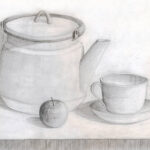Introduction to Lápiz Dibujos
Lápiz dibujos, or pencil drawings, represent a timeless form of artistic expression that has captivated the imaginations of artists and enthusiasts for centuries. The simplicity of a pencil, coupled with the vast range of techniques that can be employed, makes lápiz dibujos a versatile and accessible medium. Whether you are a seasoned artist or a beginner, understanding the nuances of pencil drawings can help you appreciate this art form’s depth and potential.
The History of Lápiz Dibujos

Pencil drawing has a rich history dating back to the Renaissance when artists like Leonardo da Vinci and Michelangelo used it to sketch out their ideas. The pencil, as we know it today, evolved in the 16th century when graphite was discovered in England. Artists quickly adopted this new medium, and it became a staple in the art world. Over time, pencil drawings evolved from simple sketches to intricate works of art that could stand alone as masterpieces.
Types of Pencils and Their Uses
When it comes to lápiz dibujos, the type of pencil you use can significantly impact the outcome of your drawing. Pencils are categorized by the hardness of their graphite, ranging from hard (H) to soft (B). Hard pencils, such as 2H or 4H, produce light, precise lines ideal for detailed work. In contrast, soft pencils, like 2B or 6B, create darker, bolder lines suitable for shading and creating depth.
- Graphite Pencils: These are the most common type of pencils used in lápiz dibujos. They come in various grades, from H (hard) to B (soft), allowing artists to achieve different levels of darkness and precision.
- Charcoal Pencils: Charcoal pencils offer a different texture and are used for creating rich, dark lines and shading. They are ideal for dramatic effects and are often used in combination with graphite pencils.
- Colored Pencils: While traditionally lápiz dibujos are monochromatic, colored pencils can be used to add a splash of color, making the drawings more vibrant and dynamic.
Techniques for Mastering Lápiz Dibujos
Mastering lápiz dibujos involves understanding and applying various techniques to create the desired effects. Here are some essential techniques to get you started:
- Hatching and Cross-Hatching: These techniques involve drawing parallel lines (hatching) or intersecting lines (cross-hatching) to create shading and texture. They are fundamental in building depth and contrast in pencil drawings.
- Blending: Blending is the process of smoothing out pencil strokes to create a gradient or a soft transition between different shades. This can be done using tools like blending stumps, tissues, or even fingers.
- Stippling: Stippling involves creating a series of small dots to build up texture and tone. This technique is time-consuming but can produce stunning results, especially in creating detailed textures like skin or fabric.
- Erasing for Highlights: Using an eraser as a drawing tool is a technique that can add highlights and refine details. Erasers can lift graphite off the paper, creating light spots that add dimension to the drawing.
- Layering: Layering involves building up different shades and tones by repeatedly applying pencil strokes. This technique is essential for creating depth and achieving a realistic look.
The Importance of Paper in Lápiz Dibujos
The type of paper you choose for lápiz dibujos can affect the final outcome of your artwork. Different papers have varying textures, weights, and absorbency levels, which can influence how the pencil marks appear on the surface.
- Smooth Paper: Ideal for detailed work, smooth paper allows for fine lines and delicate shading. It’s perfect for technical drawings and portraits where precision is key.
- Textured Paper: Textured paper, such as cold-pressed or rough paper, adds a tactile quality to the drawing. The texture can enhance the visual interest of the artwork, making it more dynamic.
- Toned Paper: Toned paper, which comes in shades like gray or tan, provides a mid-tone background that can make highlights and shadows stand out. This type of paper is excellent for creating dramatic effects.
Inspiration and Creativity in Lápiz Dibujos
Lápiz dibujos offer endless possibilities for creativity. Artists can draw inspiration from various sources, including nature, human figures, still life, and abstract concepts. The key to creating compelling lápiz dibujos lies in observing the world around you and translating what you see into your unique artistic style.
- Nature and Landscapes: Drawing landscapes and natural elements like trees, mountains, and water can be a rewarding experience. These subjects allow you to explore different textures and shading techniques.
- Portraits: Capturing the human face in pencil drawings is both challenging and fulfilling. Portraits require attention to detail and an understanding of facial anatomy to create a realistic representation.
- Abstract Art: Lápiz dibujos don’t have to be realistic. Abstract art allows you to experiment with shapes, lines, and shading to convey emotions or concepts.
Contemporary Lápiz Dibujos
In the modern art world, lápiz dibujos have taken on new forms and styles. Artists today are pushing the boundaries of pencil drawings, using them in combination with other media or as a stand-alone art form. The rise of digital art has also influenced lápiz dibujos, with artists using digital pencils and tablets to create artwork that mimics traditional pencil drawings.
Conclusion
Lápiz dibujos, or pencil drawings, remain a powerful and versatile form of artistic expression. From their historical roots to modern-day applications, pencil drawings continue to inspire and challenge artists worldwide. Whether you are a beginner or an experienced artist, exploring lápiz dibujos can open up new avenues for creativity and self-expression. With the right tools, techniques, and inspiration, the possibilities in lápiz dibujos are limitless.